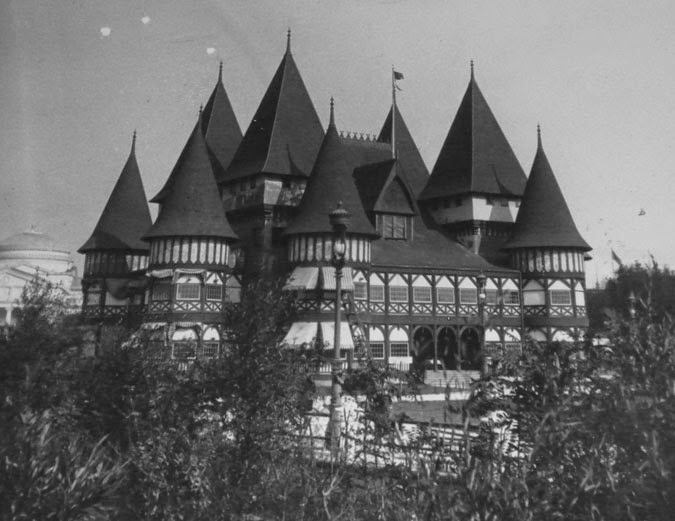A century ago, Frances Glessner created quite a stir when she made a
simple request to the members of her Monday Morning Reading Class – please remove
your hats. The request made the news,
with the Chicago Tribune reporting
that it was “one of the greatest sensations Prairie avenue has ever known.” To further complicate matters for the
well-dressed lady of the day, a similar order had been issued by the management of the Chicago
Symphony Orchestra.
On February 20, 1915, the Tribune
published an article entitled “Hats Off Edict Rules at Mrs. Glessner’s.” The article reads as follows:
“The members of Mrs.
John J. Glessner’s Monday morning reading class, which for twenty years has
been a feature of south side society have met with a great adventure this
winter. It is needless perhaps to
describe here the beatitudes of this Monday class, the smartly arranged women
who file in from half past 10 onwards, the glossy furs, the becoming hats, the
latest importation in work bags over the arm.
“Tout Prairie avenue”
is present and not only is the latest reading provided by Mrs. Horace Kennedy,
but a delightful informal luncheon is offered by the hospitable hostess, whose
Prairie avenue mansion at Eighteenth street has the fine hardy lines of a Roman
stronghold.
“The class, numbering
about forty or fifty, sits around the long library. This fall, simultaneously with the stirring
order to unbonnet all patrons of the Symphony concert, came the request that
members of the Monday class should remove their hats during the morning.
“This created one of
the greatest sensations Prairie avenue has ever known, for the hat of the woman
who has ordered her household, looked over her mail, telephoned several times,
and been to market, all before 10 o’clock, usually covers a multitude of sins
of omission.
“But, trying as it
was, the ground rules have obtained, and careful observers say that the women
of Prairie avenue are now much better coiffed than formerly.
“Although the
unhatting rule does not extend to the boxes at the Friday concert – and how one
does enjoy those women in the loges whose hats and hatpins are not dropping to
the floor every few minutes – it is noticeable that Mrs. Glessner always sits
hatless in her box, the center of the grand tier, and in no way profits by the
immunity to which her location entitles her.”
The issue did not end there. Two
months later, the Tribune ran another
article entitled “Unbonneting Rule at Symphony Irksome” written by a columnist
identified only as “Cinderella.” In this
article, we learn a bit more about the impact of the order, the journalist vividly describing what a woman must go through to comply - the
picture of which “would be enlivening in vaudeville.”
“The rule to unbonnet
during the concerts grows more and more unpopular. It is considered a very arbitrary ruling and
rather inconsistent, as the box holders, who are amply supplied with hooks and
chairs and mirrors and extra space, are outside the law and sit triumphantly in
their most becoming hats looking down upon the sea of disordered hair and oddly
variegated coiffures beneath them.
“Always excepting
Mrs. Glessner, of course, who has the central box in the horseshoe and takes
off her hat, presumably because she likes to.”
“The unhatting is
especially irksome to certain elderly ladies who have been subscribers to the
concerts ever since their beginning years ago.
“Their experience now
at the erstwhile beloved symphony concert would be enlivening in vaudeville.”
“First comes the
handbag, then the wraps folded across the knees, then a scarf, then a small
knit jacket. Piled on top of that a muff
and fur stole and high on top of the pyramid the hat perched jauntily with its
hatpins, effectually cutting off from its owner’s view the graceful and poetic
evolutions of Mr. Stock leading the orchestra.
“The lady desires her
handkerchief, pokes for it in her handbag, and, O, help! the whole thing slides
off her lap into the aisle.
“Younger women do not
wear so many wraps, but they positively hate going forth in the late afternoon
gayeties with their hats on crooked.
“After all, this
unhatting phase seems rather provincial, and more worthy of a small German town
under military rule, than of a large city.
One hears that the back seats and the last row of side seats have
suddenly become very popular because the women in them are permitted up to date
to wear their hats.”
All the while, Frances Glessner was sitting in Box M at Orchestra Hall, no
doubt amused at all the fuss caused by a simple rule that she herself had
been observing for years.


















